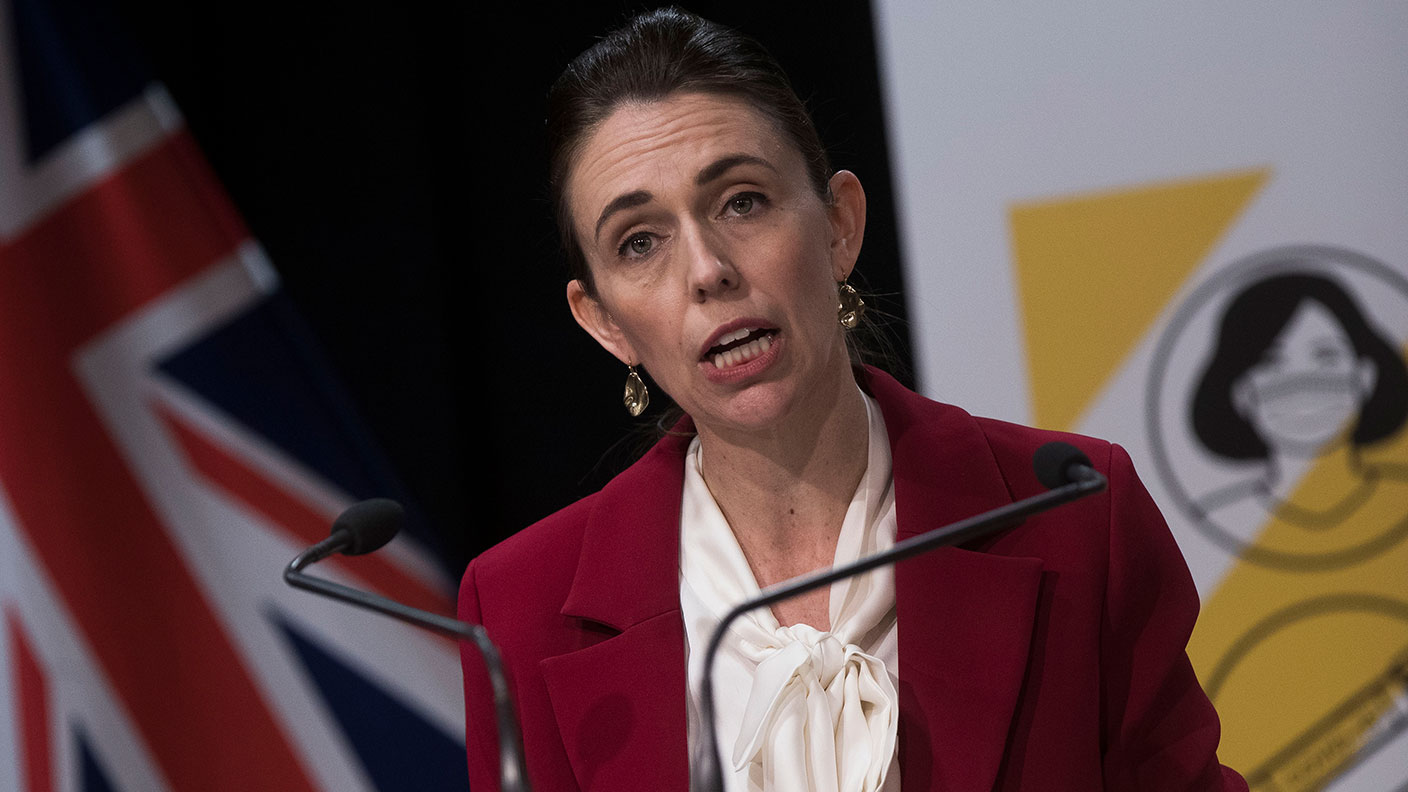Here’s why UK investors should keep an eye on New Zealand’s fight against inflation
The Bank of England remains relaxed about inflation and is holding off raising interest rates. But things are very different on the other side of the world, says John Stepek. Here's what we can learn from New Zealand.


Quick thing before I start – if you haven’t booked your ticket to MoneyWeek’s Wealth Summit yet, get in quick! Only a week to go!
Inflation in the UK hit a 30-year high yesterday, in old money (by old money, I’m referring to the inflation measure that the Bank of England used to target, RPIX, which is now rising at an annual rate of 6.1%).
It’s a sign of just how accustomed to central bank timidity we’ve become that we still can’t be 100% sure that the Bank of England will raise rates at its next meeting, even by a whopping 0.15 percentage points (from 0.1% to 0.25%).
MoneyWeek
Subscribe to MoneyWeek today and get your first six magazine issues absolutely FREE

Sign up to Money Morning
Don't miss the latest investment and personal finances news, market analysis, plus money-saving tips with our free twice-daily newsletter
Don't miss the latest investment and personal finances news, market analysis, plus money-saving tips with our free twice-daily newsletter
But we’ve spent enough time on that this week already.
Instead this morning, I’d like to take you on a virtual trip using nothing more than the power of words (it’s your very own Money Morning Metaverse!) all the way to the other side of the world, where one central bank is decidedly unrelaxed about surging inflation.
Welcome to the distant realm of New Zealand.
What New Zealand can tell us about interest rates
New Zealand spent most of last year making headlines because of its strict approach to Covid, with the usual suspects on either side of the pandemic political divide alternately hailing or heckling St Jacinda Ardern, the prime minister.
But from a financial point of view, what’s really interesting is New Zealand’s monetary policy. Yes, I know how that sounds, but bear with me – here’s a brief history of interest rates moves in New Zealand.
Before the financial crisis, the central bank interest rate was sitting at 8.25%, right up until June 2008 (8.25%! Imagine getting that on your cash savings).
After the big joint effort by central banks around the world to slash rates and print money in spring 2009, rates got as low as 2.5% – but they didn’t go any lower in the post-financial crisis period.
And in March 2014, interest rates started to rise again; by 2015, they’d gone back up to 3.5%. Rates then started to fall back again because Australia and New Zealand got caught up in China’s slowdown and the trade disputes in that part of the world (with dairy exports a particular issue).
In fact, by 2020, rates had fallen to 1%. Then, when Covid hit, they were slashed to 0.25%. It was only at that point that the Reserve Bank of New Zealand (RBNZ) actually started quantitative easing (QE – printing money to buy bonds) for the first time.
By contrast, in the UK, rates fell to 0.5% in 2009 – that’s when our QE programme started. And then when Mark Carney panicked after the Brexit vote in 2016, they fell even further to 0.25%, and we did more QE.
Interest rates in the UK only rose twice after that – getting back to the mighty heights of 0.75% in August 2018 (when America’s central bank, the Federal Reserve, was leading central banks higher), then crashing back to 0.1% when Covid hit. And we’re still sitting there.
The RBNZ, by contrast, has already scrapped QE. It raised rates to 0.5% in October, and is looking eager to do so again any minute now. Ben Udy, Australia and New Zealand economist at Capital Economics, reckons rates will rise by half a percentage point next week to 1%, with 2% likely by the middle of next year.
Why should you care about what the RBNZ does, or what’s going on in a developed economy that is literally on the other side of the world from the UK?
Well, because it’s not often you get to see counterfactuals play out in real time in economics and finance. It’s not remotely perfect (compared to the UK, New Zealand is a tiny economy and one which is entirely irrelevant to the global financial system), but it might be the closest you’ll get on certain dimensions.
New Zealand has a lot more breathing room than the UK
Firstly, it’s interesting that, despite different approaches to lockdown, Britain and New Zealand are seeing similar things happen in their economies: employment is up, inflation is soaring, and growth is strong.
Headline inflation in New Zealand is now running at 4.9%; unemployment is at a record low of 3.4%; and with the country now catching up on vaccines, stringent lockdowns are no longer the issue they were. Hence the rise in interest rates.
In short, everyone’s experiencing the same problems as we enter the post-pandemic recovery phase.
Secondly, it’s interesting to see a central bank operating within an economy that never got used to the idea of rates being permanently at zero, or QE permanently being on tap.
The RBNZ clearly still sees interest rate as its main operational tool, and it hasn’t grown afraid of moving rates. There is no market throwing a “tantrum” just because the RBNZ might stick rates up by a quarter or half a percentage point. Imagine what’d happen if the Federal Reserve looked set to raise rates by a similar amount at its next meeting – absolute carnage.
There’s another interesting twist with New Zealand. The central bank – unlike others in the developed world – has been told to consider house prices in its monetary policy decisions.
The bank has pushed back against this somewhat (and you can kind of understand why – popping a housing bubble is a slightly different task to controlling inflation) but there’s still some political pressure on it to not be seen as fuelling bubbles.
This is a massive, massive difference compared to the Bank of England or the Federal Reserve. If anything, both of those banks are under subtle (and often not-so-subtle – remember Donald Trump’s tweets?) political pressure to keep bubbles going.
Finally, there is one other very obvious difference which is that New Zealand’s debt-to-GDP is tiny compared to that of its developed world peers. UK debt-to-GDP is sitting at not far off 100% right now. New Zealand’s is about half that.
So, to put it bluntly, keeping interest rates low is far more important to the UK than to New Zealand.
From an investment point of view, these are all mostly just points of curiosity. But I’m going to keep an eye on how things continue to unfold, because we clearly have two economies here which are facing similar problems but are following different paths.
Will raising rates allow New Zealand to moderate inflation compared to the UK? Or will it continue regardless? Or trigger a recession? And will house prices come under any sort of control? Or is a small economy like New Zealand essentially powerless against global capital flows?
I have my doubts. But you know what? It’s nice to have the option. And arguably, that’s something the UK lacks right now.
Until tomorrow,
John Stepek
Executive editor, MoneyWeek
Get the latest financial news, insights and expert analysis from our award-winning MoneyWeek team, to help you understand what really matters when it comes to your finances.
John Stepek is a senior reporter at Bloomberg News and a former editor of MoneyWeek magazine. He graduated from Strathclyde University with a degree in psychology in 1996 and has always been fascinated by the gap between the way the market works in theory and the way it works in practice, and by how our deep-rooted instincts work against our best interests as investors.
He started out in journalism by writing articles about the specific business challenges facing family firms. In 2003, he took a job on the finance desk of Teletext, where he spent two years covering the markets and breaking financial news.
His work has been published in Families in Business, Shares magazine, Spear's Magazine, The Sunday Times, and The Spectator among others. He has also appeared as an expert commentator on BBC Radio 4's Today programme, BBC Radio Scotland, Newsnight, Daily Politics and Bloomberg. His first book, on contrarian investing, The Sceptical Investor, was released in March 2019. You can follow John on Twitter at @john_stepek.
-
 Top 10 locations for buyers and renters revealed
Top 10 locations for buyers and renters revealedLondon is crowned as the most popular location for renters and buyers, despite rising costs. But where else are house hunters heading to?
-
 Making financial gifts to loved ones? Write it down or risk giving an IHT bill too
Making financial gifts to loved ones? Write it down or risk giving an IHT bill tooGiving gifts can be a way to pass on wealth and reduce the inheritance tax bill on your estate but do it wrong and you could leave family and friends more than they bargained for.
-
 UK wages grow at a record pace
UK wages grow at a record paceThe latest UK wages data will add pressure on the BoE to push interest rates even higher.
-
 Trapped in a time of zombie government
Trapped in a time of zombie governmentIt’s not just companies that are eking out an existence, says Max King. The state is in the twilight zone too.
-
 America is in deep denial over debt
America is in deep denial over debtThe downgrade in America’s credit rating was much criticised by the US government, says Alex Rankine. But was it a long time coming?
-
 UK economy avoids stagnation with surprise growth
UK economy avoids stagnation with surprise growthGross domestic product increased by 0.2% in the second quarter and by 0.5% in June
-
 Bank of England raises interest rates to 5.25%
Bank of England raises interest rates to 5.25%The Bank has hiked rates from 5% to 5.25%, marking the 14th increase in a row. We explain what it means for savers and homeowners - and whether more rate rises are on the horizon
-
 UK inflation remains at 8.7% ‒ what it means for your money
UK inflation remains at 8.7% ‒ what it means for your moneyInflation was unmoved at 8.7% in the 12 months to May. What does this ‘sticky’ rate of inflation mean for your money?
-
 Would a food price cap actually work?
Would a food price cap actually work?Analysis The government is discussing plans to cap the prices of essentials. But could this intervention do more harm than good?
-
 Is my pay keeping up with inflation?
Is my pay keeping up with inflation?Analysis High inflation means take home pay is being eroded in real terms. An online calculator reveals the pay rise you need to match the rising cost of living - and how much worse off you are without it.
